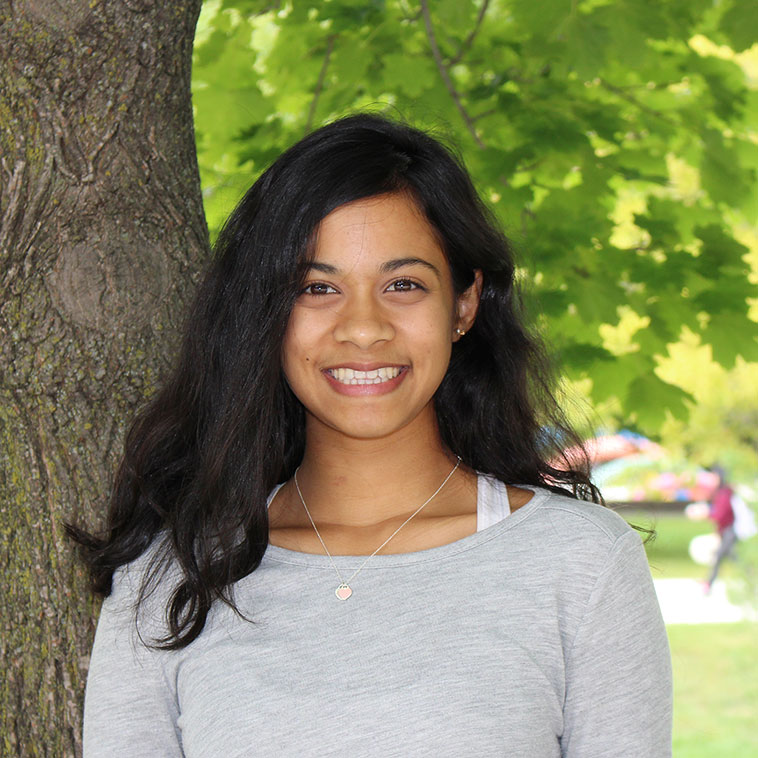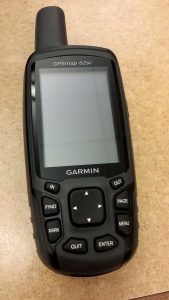 This blog is an archived post written by Aliya during her 3rd year in the Environmental Management stream.
This blog is an archived post written by Aliya during her 3rd year in the Environmental Management stream.
Over my first three years of Environmental Studies at York, I have had some fun and engaging hands-on experiences in my major courses. Doing these activities in my classes helped me better understand the course content and allowed me to engage more with my peers. These hands-on experiences also helped me become more confident in a smaller classroom setting and made me feel like I was getting the most out of my degree. Below are a few of my favourite hands-on BES experiences.
ENVS 1500: Tree Species Identification Assignment
As an assignment in tutorial of Intro to Environmental Science (ENVS 1500) course, we split up into smaller groups of about 3-4 people and were given tree identification guides that allowed us to match a specific tree species to the one in the handbook. To be honest, it was pretty tricky! It was like playing one of those games on luminosity that work your brain. Finding the tree is easy, but identifying by the leaves on the tree was pretty hard, especially since we were doing it in the fall and leaves were starting to change color and fall off. Despite the paper cut I got from flipping through the handbook so much, it was a pretty enjoyable activity with the fresh air, the sound of crunching leaves on the ground as you walk and good company from my like-minded classmates. Now, I can confidently point out many tree species just by looking at them and tell you that the Boyer woodlot on York’s Keele campus has an abundance of beech trees.
ENVS 2200: Field trip to Midland, Ontario
In the ENVS 2200: Urban and Regional Environments, we went on a trip to Midland, Ontario. While the bus ride was long, the experience itself was so worth it. My visit to the Huronia Museum, which features a Huron/Ouendat Village, and Sainte-Marie Among the Hurons, French settler site, was very thought-provoking as it allowed me to draw connections to urban and regional environments.

Wendat Longhouse
We started off visiting the Huronia Museum looking at the longhouses they built and lived in. We also looked at what they grew outside, such as corn and squash, and how they preserved their meats. After that, we visited the Sainte-Marie Among the Hurons site where we learned about again the way the French settlers lived, what they ate, and how important religion was to their way of life.
The trip gave me great knowledge on the ways of life for two settlements: the Wendat peoples and French missionaries. By visiting these two sites, I was able to understand the perspectives of the two settlements, and how it ultimately correlates to the spaces they inhabited as well as the symbolism it entails such as where food was grown, where they worshipped/learned, and slept. The lives of both settlements had a great connection to urban and regional environments demonstrated through the use of space and symbolism. I really enjoyed learning about the histories of these two cultures and comparing it to how we live today and what has changed.
ENVS 3520: GPS Tracking Exercise

Garmin GPS Device
In my ENVS 3520: Intro to GIS course (a requirement in the GIS certificate program), my class and I went outside to collect ground control points outside of the HNES building using Garmin GPS trackers. We learned how to use the GPS to map points and lines and download data and view it in the ArcMap software. The GPS unit receives signals from Global Positioning Satellites orbiting the Earth. It uses these signals to estimate your position relative to the WGS84 datum, which can then be transferred to a GIS software.
I really liked this activity because it allowed me to go outside and take my own recorded data and use it for in-class purposes. Knowing that I gathered the data myself made completing the assignment feel more real and I felt very accomplished when finishing it in the end.
For me, having the ability to go out and apply the information and content you have learned in class, is one of the best kinds of education you can get. I'm looking forward to the new hands-on experiences I will get to share as I complete the last year and a half of my program. Adventure is out there!

